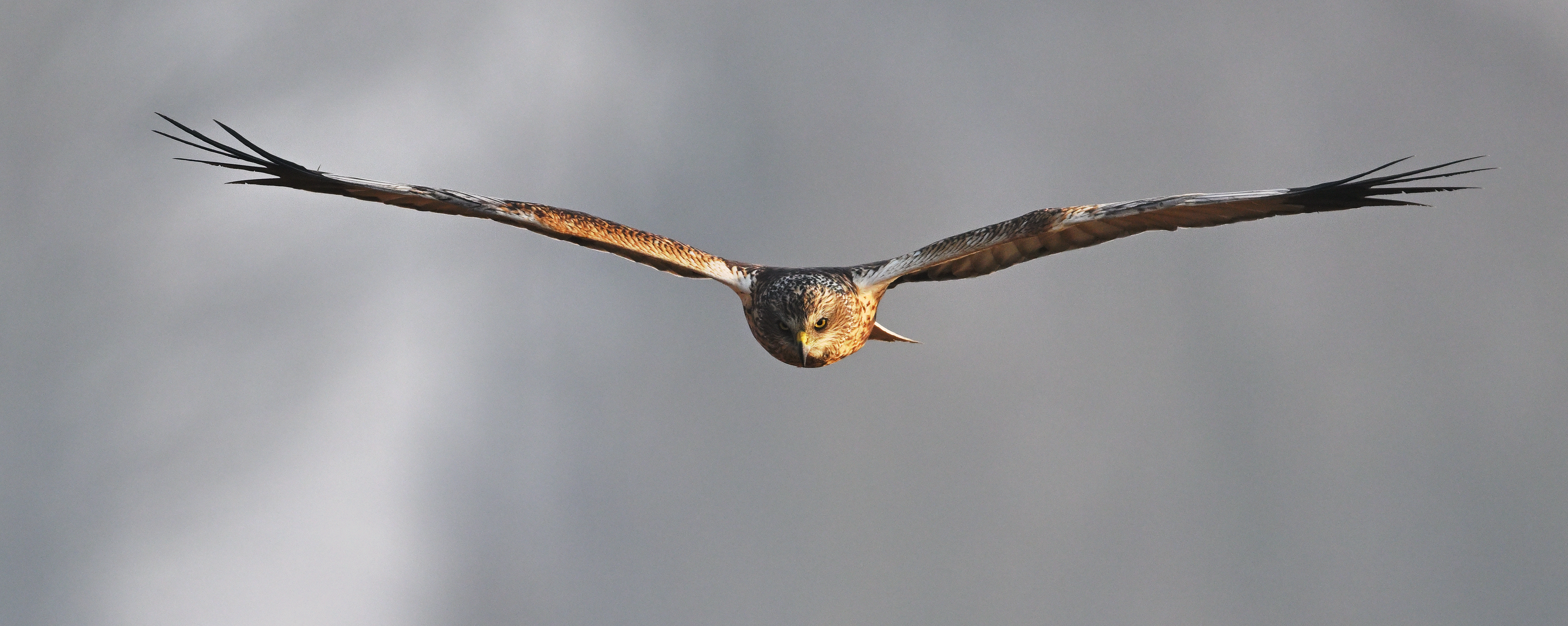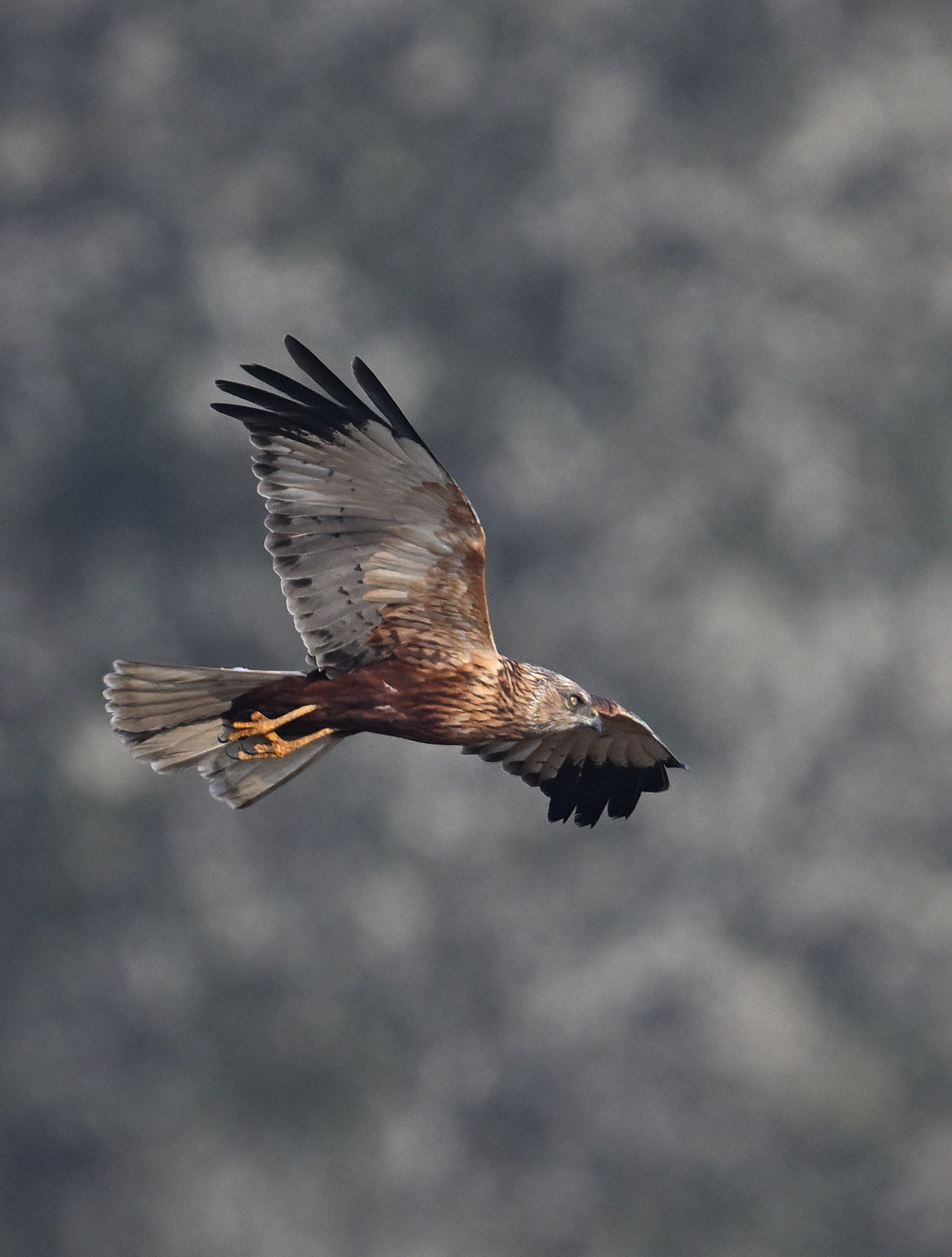The Marsh Harrier
Last week, I visited the UK to photograph one of my favourite raptors......the Marsh Harrier.
 |
| a Male Marsh Harrier hunting over the reeds. |
The largest of the harriers, the Marsh Harrier can be recognised by its long tail and light flight, with wings held in a shallow 'V'. It is distinguishable from other Harriers by its larger size and heavier build, broader wings and absence of white on the rump.
Females are larger than males and have obvious creamy heads. Its future in the UK is now more secure than at any time during the last century, but historical declines and subsequent recovery means it is an Amber List species.
Marsh Harriers are a Schedule 1 listed bird on The Wildlife and Countryside Act.
In 1971, after years of persecution and habitat loss, only one nesting female remained in the whole country. Today, after decades of conservation effort, there are more than 500 pairs in the UK.
The following sequence was taken at 06.00 hrs, just after sunrise and shows the male coming in to land and mate with the female. She can just be seen on the ground slightly below and to the right of the male.
Despite the low light, I was very pleased with these images!
Fortunately, she was receptive to his advances and he mated with her immediately.
Marsh Harriers hunt small mammals, frogs, fish, insects and birds, surprising them as they drift low over fields and reedbeds. Their long legs allow them to pluck frogs and fish from the water mid-swoop.
The male has wings with grey and brown sections and black wingtips. Its head, tail and underparts are greyish, except for the chestnut belly. The female is mainly brown with a cream crown and cream leading edge to her wings.
Here are some images of this beautifully marked female, taken over a two day period last week.
 |
| This last image, shows the female, bringing in nesting material. |
The male is easily recognisable, as being smaller than the female and with much brighter plumage, which can be seen in the following images, also taken last week.
During the mating season, the male will often bring in food for the female. The handover of this gift, takes place with both birds in the air and when close enough, the male will release the food from its talons and the female will catch it in mid-flight. Sadly, although I did capture the handover of a frog in the following two images, the birds were at some distance!
 |
| Here, the female can be seen clutching at the poor frog, which is about to become lunch! |
The restoration and re-creation of reedbed habitats for conservation is likely to have helped Marsh Harriers. Other factors which may also have contributed to the increases include the ban on organochlorine pesticide use and reduced persecution from humans.
I am pleased to say that the breeding success at the location that I use, has continued to increase and it is estimated that 7 pairs of birds were nesting at the location this season!

























Spectacular photos Glynn, to catch them mating and handing over food is extraordinary. What a fabulous record of your last trip to the UK.
ReplyDeleteA bientôt, j'espère. Diane